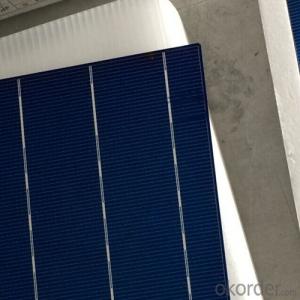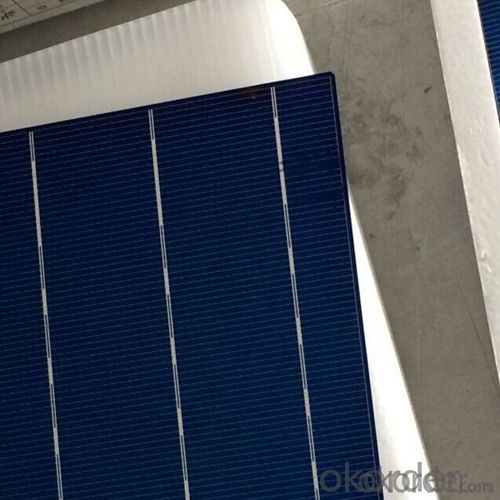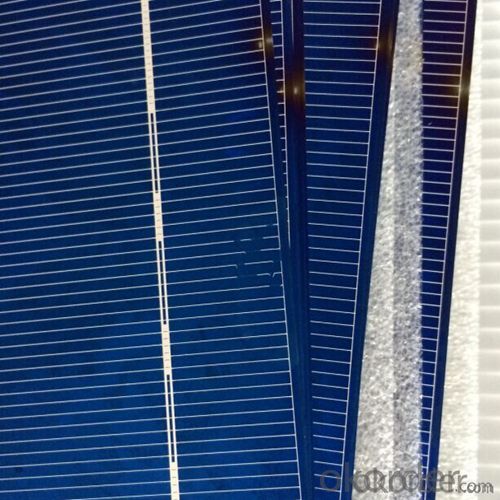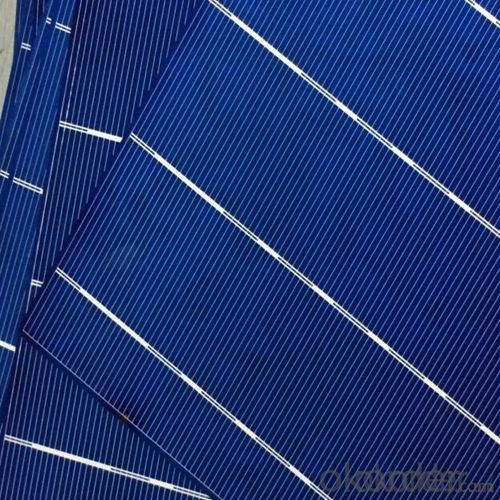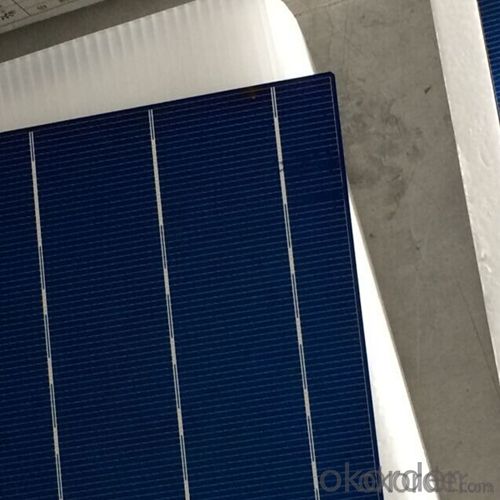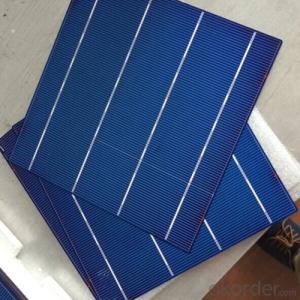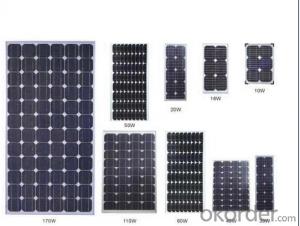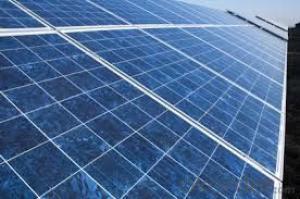Jinko Solar Cells - Not Broken with Low Price and High Efficiency
- Loading Port:
- Shanghai
- Payment Terms:
- TT or LC
- Min Order Qty:
- 30000 pc
- Supply Capability:
- 1000000 pc/month
OKorder Service Pledge
OKorder Financial Service
You Might Also Like
Product description
Solar Cells Not Broken with Low Price and Gigh EFF
A solar cell, or photovoltaic cell, is an electrical device that converts the energy of light directly into electricity by the photovoltaic effect, which is a physical and chemical phenomenon.[1] It is a form of photoelectric cell, defined as a device whose electrical characteristics, such as current, voltage, or resistance, vary when exposed to light. Solar cells are the building blocks of photovoltaic modules, otherwise known as solar panels.
Solar cells are described as being photovoltaic irrespective of whether the source is sunlight or an artificial light. They are used as a photodetector (for example infrared detectors), detecting light or other electromagnetic radiation near the visible range, or measuring light intensity.
In contrast, a solar thermal collector supplies heat by absorbing sunlight, for the purpose of either direct heating or indirect electrical power generation from heat. A "photoelectrolytic cell" (photoelectrochemical cell), on the other hand, refers either to a type of photovoltaic cell (like that developed by Edmond Becquerel and modern dye-sensitized solar cells), or to a device that splits water directly into hydrogen and oxygen using only solar illumination.
Advantage Of Solar Cells Not Broken with Low Price and Gigh EFF
1: High quality cell, Level A cell (14%—17.5%)
2.Dimensione:156*156mm Diagonal:200mm
3: Qualified certification: TUV,CE certification.
4: Warranty: five years for whole unit
Usage/Application Of Solar Cells Not Broken with Low Price and Gigh EFF
1.The absorption of light, generating either electron-hole pairs or excitons.
2.The separation of charge carriers of opposite types.
3.The separate extraction of those carriers to an external circuit.
Product Images
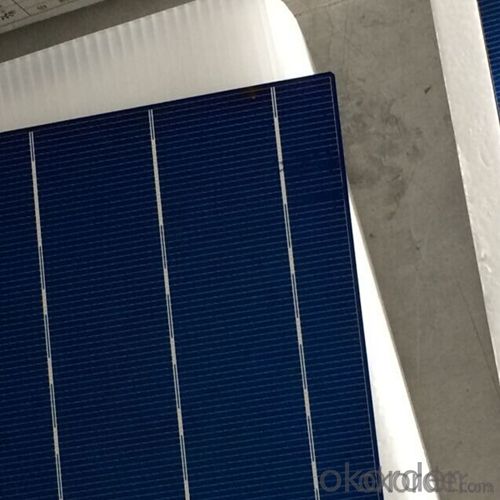
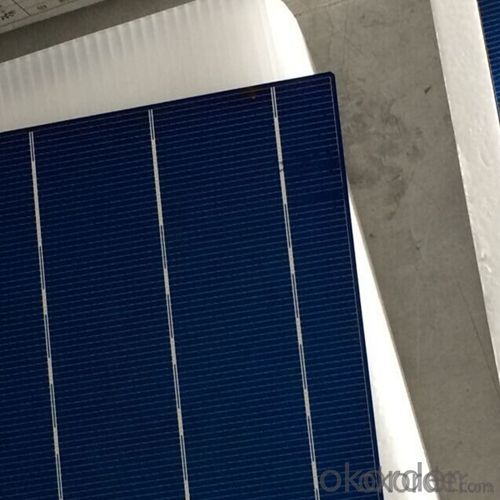
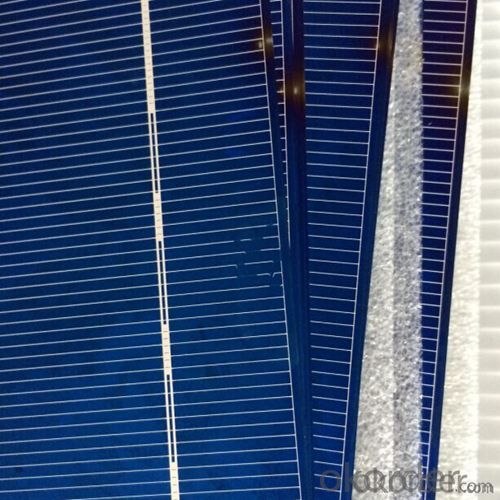
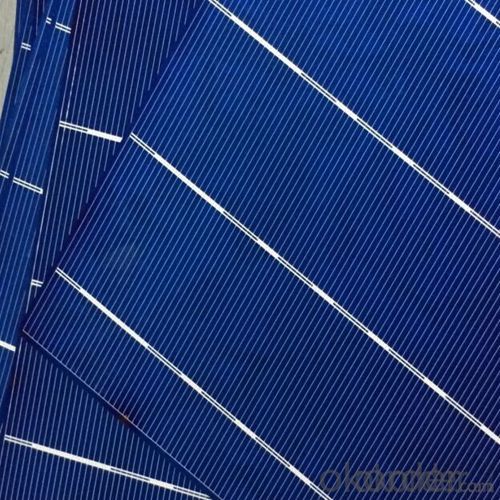
Electrical Characteristic
Efficiency (%) | Pmpp (W) | Umpp (V) | Impp (A) | Uoc (V) | Isc (A) | FF (%) |
17.25 | 4.197 | 0.524 | 7.992 | 0.62 | 8.458 | 80.03% |
17 | 4.137 | 0.524 | 7.876 | 0.619 | 8.353 | 80.01% |
16.75 | 4.076 | 0.522 | 7.81 | 0.617 | 8.286 | 79.73% |
16.5 | 4.015 | 0.518 | 7.746 | 0.613 | 8.215 | 79.73 |
16.25 | 3.955 | 0.515 | 7.683 | 0.61 | 8.144 | 79.61% |
16 | 3.894 | 0.512 | 7.613 | 0.608 | 8.075 | 79.31% |
15.75 | 3.833 | 0.51 | 7.534 | 0.605 | 8.058 | 78.62% |
15.5 | 3.772 | 0.508 | 7.453 | 0.604 | 8.02 | 77.87% |
15.25 | 3.771 | 0.505 | 7.35 | 0.604 | 9.997 | 76.83% |
15 | 3.65 | 0.503 | 7.271 | 0.604 | 7.989 | 75.64% |
14.5 | 3.529 | 0.499 | 7.067 | 0.604 | 7.988 | 73.14% |
14 | 3.407 | 0.499 | 6.833 | 0.604 | 7.833 | 72.01% |
Intensity Dependence
Intensity [W/m2] | Isc× [mA] | Voc× [mV] |
1000 | 1.00 | 1.000 |
900 | 0.90 | 0.989 |
500 | 0.50 | 0.963 |
300 | 0.30 | 0.939 |
200 | 0.20 | 0.920 |
Packaging & Delivery Of Poly Solar Cell 156mm | |
Packaging Detai | Packaging Detail:Export Carton and Pallet or under customer request. |
Delivery Detail:10-20days | |
FAQ
Q:What price for each watt?
A:It depends on the quantity, delivery date and payment terms
Q:What is your warranty system?
A:Our Solar cells performance guarantees for 25 years
Q:How do you pack your products?
A:We have rich experience on how to pack thecells to make sure the safety on shipment when it arrives at the destination.
- Q: How do solar cells perform in areas with high humidity?
- Solar cells typically perform slightly less efficiently in areas with high humidity due to the presence of moisture in the air. The water vapor can reduce the amount of sunlight reaching the solar cells and can also cause corrosion over time. However, modern solar cell designs have improved significantly to mitigate these effects and ensure reliable performance even in humid conditions.
- Q: What is the impact of fire hazards on solar cells?
- Fire hazards can have a significant negative impact on solar cells. High temperatures caused by fires can damage or melt the delicate components of solar cells, leading to a decrease in their efficiency or complete malfunction. Additionally, smoke and debris from fires can cover the surface of solar panels, reducing their ability to absorb sunlight and generate electricity. Therefore, fire hazards pose a serious risk to the functionality and longevity of solar cells.
- Q: Can solar cells be used in railway applications?
- Yes, solar cells can be used in railway applications. They can be installed on train rooftops to generate electricity, which can power various systems such as lighting, air conditioning, and communication systems. This helps reduce reliance on traditional power sources, lower operating costs, and make railways more sustainable and environmentally friendly.
- Q: What is the impact of solar cells on wildlife?
- The impact of solar cells on wildlife is generally minimal and beneficial. Solar cells produce clean energy without emitting harmful pollutants or greenhouse gases, reducing air and water pollution that can negatively affect wildlife habitats. Additionally, solar energy infrastructure typically occupies a small footprint and can coexist with wildlife habitats, allowing animals to continue their normal behaviors. However, there have been some concerns about the potential for bird collisions with solar panels and the disruption of desert ecosystems during large-scale solar installations. Overall, compared to traditional energy sources, solar cells have a much lower impact on wildlife and contribute to a more sustainable future.
- Q: Can solar cells be installed on sloped surfaces?
- Yes, solar cells can be installed on sloped surfaces. In fact, sloped surfaces can often be advantageous for solar panel installation as they allow for better sun exposure and increased energy generation.
- Q: Can a solar cell be used in commercial buildings?
- Solar cells are very often used in commercial buildings to generate the power
- Q: How long does it take to make a solar cell?
- Solar cell requires the sunlight to be made eventually, so if it's not sunny at all, it will take you much longer than you thought.
- Q: Can solar cells be used for large-scale power generation?
- Yes, solar cells can certainly be used for large-scale power generation. They have the potential to harness abundant sunlight and convert it into electricity on a massive scale. As technology and efficiency of solar cells continue to improve, they are increasingly being deployed in utility-scale solar farms, providing a sustainable and renewable source of power to meet the growing energy demands of our society.
- Q: What is the impact of bird collisions on solar cell performance?
- Bird collisions can have a negative impact on solar cell performance. When birds collide with solar panels, it can cause physical damage to the panels, leading to reduced efficiency and power output. Additionally, bird droppings and debris from collisions can accumulate on the surface of the panels, further hindering their performance. Implementing preventive measures, such as bird deterrents or mesh covers, can help mitigate the impact of bird collisions on solar cell performance.
- Q: Can solar cells be used for powering remote research stations?
- Yes, solar cells can be used for powering remote research stations. Solar cells, also known as photovoltaic cells, convert sunlight into electricity, making them an ideal choice for locations where grid connections are impractical or non-existent. By harnessing the power of the sun, solar cells can provide a reliable and sustainable source of energy for remote research stations, ensuring continuous power supply for various scientific activities and equipment.
Send your message to us
Jinko Solar Cells - Not Broken with Low Price and High Efficiency
- Loading Port:
- Shanghai
- Payment Terms:
- TT or LC
- Min Order Qty:
- 30000 pc
- Supply Capability:
- 1000000 pc/month
OKorder Service Pledge
OKorder Financial Service
Similar products
Hot products
Hot Searches
Related keywords
